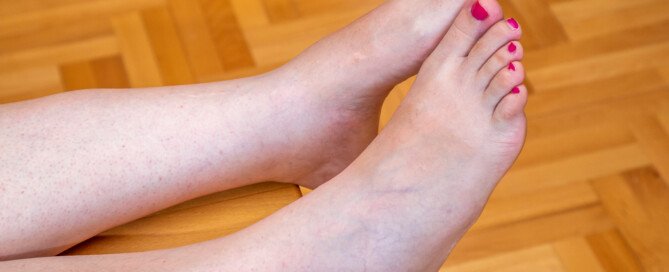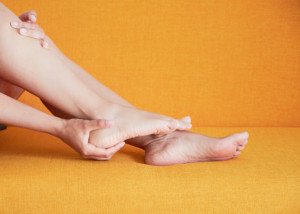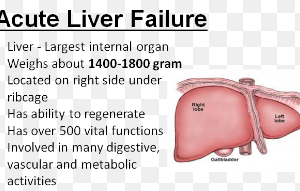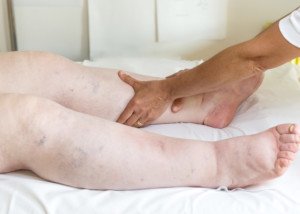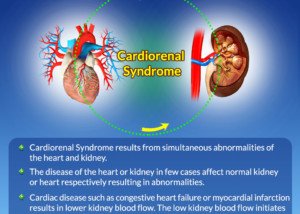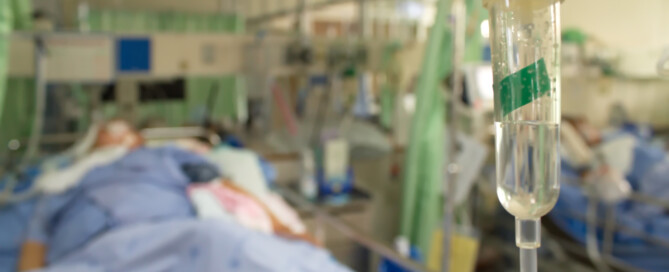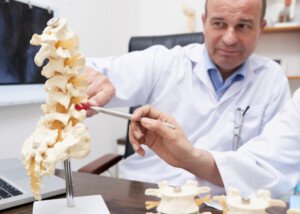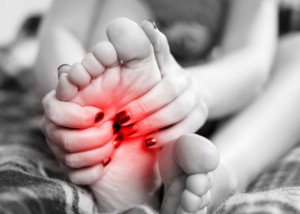Benign Causes of Both Ankles Being Swollen & Puffy and Treatment

You can’t always tell by simply looking at your swollen puffy ankles if the cause is serious or benign.
If you’re worried about the bilateral swelling in your ankles, especially if it seems to be getting worse (do you use a tape measure?), then a visit to the doctor is in order. (more…)
Why Is Hand Grip Strength Linked to Heart Health?

It’s no secret in the medical world that hand grip strength is associated with heart health, cardiac events and death.
You may be wondering what on earth does hand grip strength have to do with heart health. Keep reading… (more…)
Treating Pneumonia in the Elderly with Heart Failure
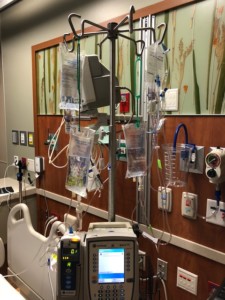
Here’s what you need to know about treatment if your elderly family member is diagnosed with pneumonia but has pre-existing heart failure.
Pre-existing heart failure poses a significant risk of higher mortality when such patients acquire pneumonia. (more…)
Why Chronic Heart Failure Patients Should Exercise the Legs

Exercised legs are very important for chronic heart failure patients.
Don’t assume that legs don’t matter just because they’re far from the heart. (more…)
Should Patient with Acute Heart Failure Receive IV Fluids?

If a doctor didn’t order IV fluids for a patient with acute decompensated heart failure, this was probably a very smart move…
even though it would seem—from an intuitive standpoint—that IV fluids would be beneficial. (more…)
How Much Weight Gain Can Cause Future Heart Failure?

Gaining weight over time can put you at risk for future heart failure.
The “fat acceptance” subset of the body positive movement needs to understand this.
Chronic heart failure should never be an “accepted” disease.
Weight Gain over Time, not Weight Loss, Is Tied to Heart Failure
A study took a look at 1,262 adults with a mean age of 44, and 36 percent of them were obese.
The study (Journal of the American Heart Association, July 2017) revealed that even small amounts of weight gain over time are associated with heart failure.
Weight LOSS over a period of time is not correlated to heart failure.
With study results such as these, how can anyone in the bopo movement believe that being overweight isn’t an independent risk factor for heart problems?

The Study and Its Results
• The adults were followed for seven years.
• At the study’s beginning, the participants were free of heart disease and factors that would put them at high risk for heart disease.
• At the start, and then seven years later, they had MRIs of their hearts and several body fat measurements.
• Weight gain of even five percent meant an increased likelihood of thickening and enlargement of the heart’s left ventricle—a harbinger of future heart failure.
• A small weight gain also meant a higher chance of having very mild reductions in the heart’s pumping action.
• A small weight gain also meant a greater chance of change in heart muscle function and appearance – even after variables were adjusted for, such as high blood pressure, smoking, drinking and diabetes.
• Subjects who had lost weight were more likely to have decreases in heart muscle thickness.
• Body weight at the start of the study had no meaningful relevance to any of the heart changes down the road.
• A limitation of the study was its small size. The study authors affirm that the results do not mean that everyone who gains weight after middle age will get heart failure.
But why take a chance?
How to Stave off Weight Gain in Middle Age

I used to be a personal trainer and worked with many middle aged clients who did not want to keep gaining weight.
Though some cited aesthetic reasons, some also cited heart health as a motivation to prevent weight gain.
Strength training is imperative for preventing weight gain. It’s crucial to retain and even add some lean muscle, since muscle is the body’s metabolic furnace.
“Excess” skeletal muscle is far better for the heart and overall health than is excess visceral fat — the kind that engulfs the organs, including the heart.
Adding lean muscle mass through strength training will go a long way at preventing weight gain in middle age, and it’s never too early to start a strength training program.
 Lorra Garrick is a former personal trainer certified through the American Council on Exercise. At Bally Total Fitness she trained women and men of all ages for fat loss, muscle building, fitness and improved health.
Lorra Garrick is a former personal trainer certified through the American Council on Exercise. At Bally Total Fitness she trained women and men of all ages for fat loss, muscle building, fitness and improved health.
.
Top image: ©Lorra Garrick
Source: sciencedaily.com/releases/2017/07/170719173722.htm
Heart Failure Deaths vs. Death from Cancer

It’s odd that with all the people so afraid of dying from cancer, these same individuals often don’t give heart failure a second thought.
Though getting the “big C” may scare the daylights out of you, have you ever asked yourself what you’ve been doing lately to help prevent developing chronic or acute heart failure? (more…)
Why You Twitch After Prostate Cancer Surgery

Following prostate cancer surgery, a man may experience twitching down there, or what seems like a kind of twitching within or near his manhood.
This not only can be quite annoying to some patients, but it may also bring about worry in some individuals.
They may worry about nerve damage or permanent dysfunction in the organ.
“Many men have bladder spasms after surgery,” says Jonathan W. Simons, MD, President and Chief Executive Officer of the Prostate Cancer Foundation, David H. Koch Chair.
“These can feel like sudden and intense cramping pains in your lower abdomen and penis,” continues Dr. Simons.
Just what is a twitch anyways?
The descriptor of “twitching” doesn’t always mean the same thing to different patients.
It can be a sudden jerking feeling of the penis, or it could feel like there’s a work squirming beneath its skin in one small area.
But Dr. Simons says that yes, a man may experience a twitching sensation in the organ following surgery for prostate cancer.
Dr. Simons explains, “This can be normal as a healing takes place. It’s important that a patient stay in close touch with their urologist and advance practice nurse involved in the repost so they can be reassured of normal healing responses versus something that needs to be seen in the clinic.”
Any skeletal muscle in the body has the potential to randomly twitch, or twitch in response to fatigue or strain.
There are muscles in the penis. Surgery involving this organ can certainly stress the muscle fibers and cause benign twitching.
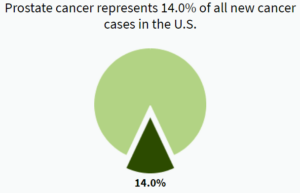
Signs of Prostate Cancer
• Erectile dysfunction
• Reduced ejaculation volume
• Frequent feeling of the need to urinate
• Trouble controlling urination or a weak stream
• Appearance of blood in the urine or semen
• Rectal pressure or pain
If you have any of these symptoms, this is not normal. Do not delay in seeing your doctor.
 Dr. Simons is an internationally recognized physician-scientist, oncologist and acclaimed investigator in translational prostate cancer research. Prostate Cancer Foundation.
Dr. Simons is an internationally recognized physician-scientist, oncologist and acclaimed investigator in translational prostate cancer research. Prostate Cancer Foundation.
 Lorra Garrick has been covering medical, fitness and cybersecurity topics for many years, having written thousands of articles for print magazines and websites, including as a ghostwriter. She’s also a former ACE-certified personal trainer.
Lorra Garrick has been covering medical, fitness and cybersecurity topics for many years, having written thousands of articles for print magazines and websites, including as a ghostwriter. She’s also a former ACE-certified personal trainer.
.
Top image: ©Lorra Garrick
Source: clinicalcenter.nih.gov/ccc/patient_education/pepubs/prostate_cancer.pdf
Spinal Stenosis: Why Back Extension Exercise Is Not Safe

It seems that the logical treatment for spinal stenosis is to repeatedly extend the back throughout the day or do sustained back extension exercises to “force” the lumbar region into a more upright position. (more…)
Inside Knee Pain During Deadlift: Possible Causes, Solutions


